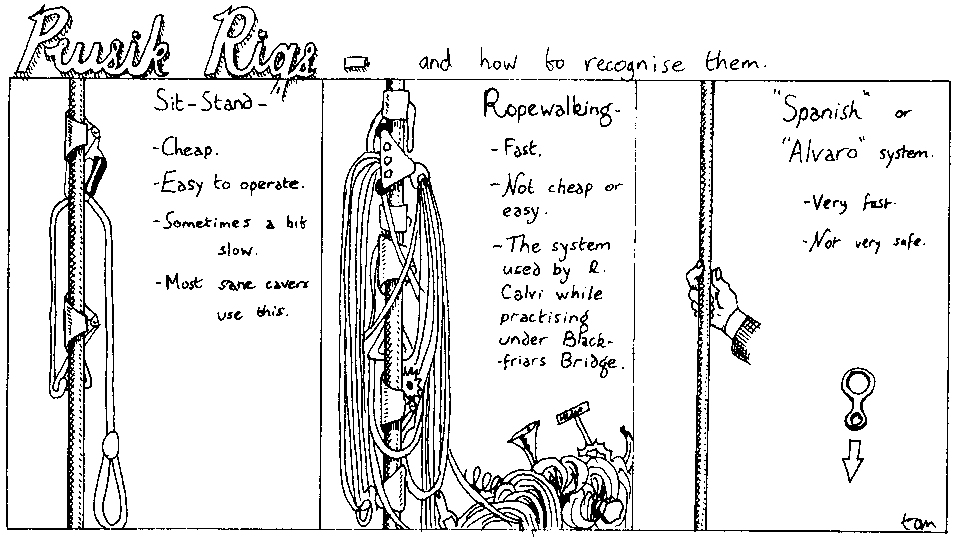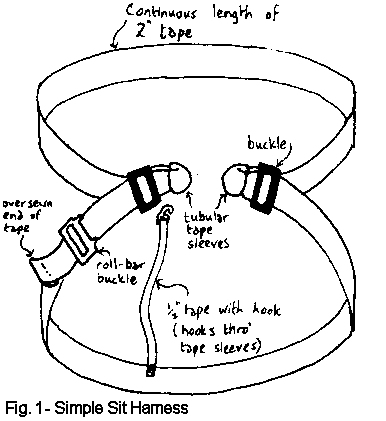
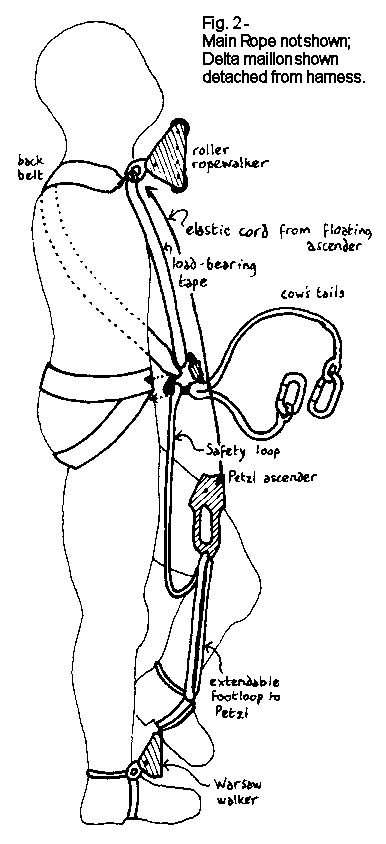
OUCC Proceedings 11 (1983)How to Rope-Walk |
OUCC Proceedings 11 Contents |
Graham Naylor
Of the two main methods of prusiking, rope-walking and sit-standing, it is only the latter that is properly documented or taught in this country. Sit-stand is thought to be the only practical means of rope climbing underground whilst rope-walking is left to the perverse. This is in marked contrast to the American attitude, where prusiking is synonymous with rope-walking. Despite what people in the know say, rope-walking isn't just good for long unrebelayed pitches. A good rope-walking system has the versatility to out-perform sit-standing on the most complicated rebelays characteristic of European caving. Sit-standing is rightly the system taught to SRT novices due to its simplicity, but despite its extra complications, rope-walking is a more powerful technique for those committed to SRT. It is however an art, and not acquired easily. A practical European prusiking system must be lightweight, compact and capable of negotiating changeovers. Compared to sit-stand, rope-walking needs only a simple sit-harness and a backbelt instead of a chest harness. The third 'spare' ascender is incorporated into the system leaving the option of converting - I was tempted to use the word 'downgrade' but I wouldn't want to stir up the sit-standers too much - to sit-stand in case of failure of an ascender. This extra ascender actually facilitates changeovers for the competent. I put forward here a suggested basic rig.
Unlike a sit-stander a rope-walker does not spend most of his time on his backside, so a simpler sit harness will suffice. Figure 1 shows the design for a simple harness combining comfort with compactness. It can be seen that the bottom strap is adjustable and can be pulled up and tightened round the waist to form a belay belt. The 4 inch tape in the diagram serves only to position the bottom strap. The end hooks to one of the roll-bar buckles at the front and does not impede movement or comfort.
 |
 |
The ascenders required for the system are shown in Figure 2. The right foot carries a Warsaw walker (Nicholls, 1981), which retains the advantages of a conventional Gibbs and yet is quick to attach or remove from the rope. At first sight, a lower ascender might seem to add inconvenience at changeovers; however, it is very useful for raising oneself above the belay at tight pitch heads, or where the belay is low down. Attachment to the foot must be secure for ease of control, and is best achieved by having a short tape loop, slightly bigger than the circumference of the boot, around the foot at the instep and an adjustable strap around the ankle. The floating ascender is either a standard or expedition Petzl, sitting around knee height. The foot-loop cord attaching this to the left foot is doubled, so that by removing one of the foot-loops from the foot, the ascender can be raised to head level. A simple piece of knotted elastic or car tyre inner tube around the ankle serves to keep the foot-loops on the foot when the prusiker is at speed. For safety, a second length of 9 mm dynamic rope attaches the floating ascender to the sit harness. The ascender is raised by a loop of elastic either placed round the neck (Editor) or taken over the shoulder to the rear of the harness (Graham). The elastic is clipped on to the ascender by means of a hook. The top ascender is a roller rope-walker, which is fixed to the sit- harness by a load-bearing tape running down the front of the chest, a fixture which is useful when resting (Ed: resting?), enabling the prusiker to sit down. A standard Howie belt is attached to the ascender by means of a hook or snap-link krab, to keep the prusiker upright and yet allow him to pass pitches on which there is a lip. To speed up putting the system on, all attachments to the sit-harness can be made by karabiners, though this does increase the system weight.
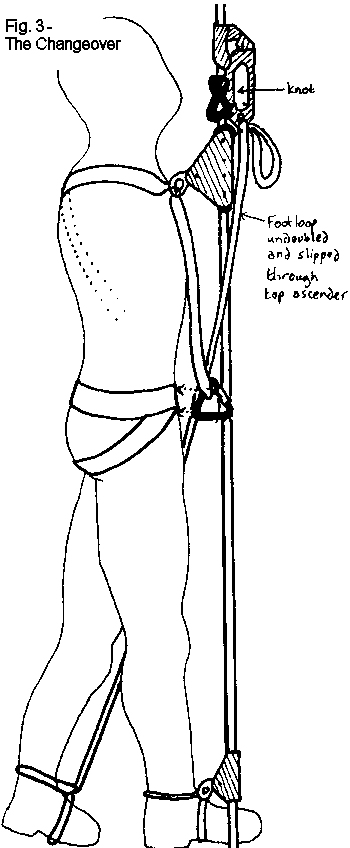 |
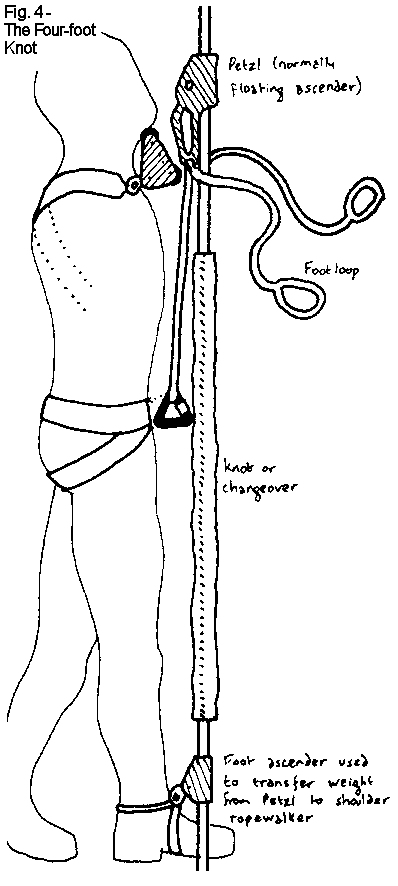 |
To pass a belay whilst prusiking, one foot-loop of the floating ascender (Figure 3) is removed from the foot and the floating ascender is taken off the rope and placed above the obstacle. The prusiker then removes his shoulder ascender and transfers that above the belay. Finally, the Warsaw walker, which will have allowed weight to be transferred between the two top ascenders easily, passes the knot and the floating ascender is moved to its normal position. Knots can also be passed in this manner. Such a system can pass any obstacle encountered underground with ease, and can pass some rebelays which would defeat sit-stand (Figure 4). Such a rebelay (the four-foot knot) would represent bad belaying technique, but something similar could be encountered in an emergency.
A rope-walking system is highly personalised. It is very advisable, once you've got your ascenders, to spend a day dangling from a tree getting the lengths of foot-loops and tapes exactly right. Try every conceivable situation: an ideal loop length for foot prusiking may make changeovers from prusiking to abseiling impossible, for example. However, once you've picked the skill up and got the system right, it's like riding a ten-speed racing bike compared to the sit-standers on their metaphorical tricycles. Try it!
Nicholls, C., 1981. A novel ropewalking device - the Warsaw Walker. Proc. Oxford Univ. Cave Club 10, 68-72.
